Your brand vocabulary is more than just a set of words; it’s a comprehensive toolkit that shapes every facet of your brand’s communication. This vocabulary is the foundation of how your brand expresses itself and interacts with the world.
Whether through marketing materials, customer service dialogues, social media interactions, or even internal communications within your company, every word chosen reflects your brand’s core values and underlying identity.
When you carefully select the language representing your brand, you’re defining the tone and style of your communication and influencing how customers perceive and interact with your brand. This perception becomes your brand’s identity in the eyes of both current and potential customers.
An effective brand vocabulary can create a consistent and memorable experience, which is crucial for building trust and loyalty.
Moreover, this set of words is a guiding star for your brand’s narrative. It helps maintain consistency across various platforms and touchpoints, ensuring your brand story is cohesive and aligned with your strategic goals. Whether it’s a tweet, a customer support email, or a promotional video, consistently using your core vocabulary reinforces your brand’s character and makes it recognizable in a crowded marketplace.
Thus, your brand vocabulary is not merely about the choice of words; it’s about crafting an experience that resonates deeply with your audience, embodies your values, and amplifies your brand’s voice across all channels.
In crafting this vocabulary, you’re equipping your brand with the tools to communicate effectively, connect emotionally, and convert interactions into lasting relationships.
Key Benefits of a Robust Brand Vocabulary
- Shapes Perceptions: Your brand vocabulary acts as a lens through which customers view your business. The words you choose can convey professionalism, warmth, innovation, or any number of traits that you wish to associate with your brand. By aligning these words with your brand’s values and mission, you ensure that your audience’s perception of your brand is exactly as you intend.
- Informs Interactions: Every interaction, whether through customer service, marketing, or even casual social media engagement, is an opportunity to reinforce your brand identity. Consistently using your brand vocabulary across these interactions helps solidify your brand’s voice and identity, making it more recognizable and trusted.
- Drives Loyalty and Advocacy: When customers consistently hear and see the same values and qualities reflected in all your communications, they are more likely to develop a robust and emotional connection with your brand. This loyalty eventually evolves into advocacy, as satisfied customers recommend your brand to others and champion your products or services in their communities.

Society and Relationships
When crafting your brand vocabulary, a pivotal starting point is understanding and defining your brand’s role within society. This role could manifest in various forms—your brand might be a connector that brings people together, a leader that sets trends and standards, or a challenger that questions the status quo and pushes for change.
Examples of Brand Roles:
- Connector: A brand like Airbnb exemplifies the connector role. Airbnb uses words such as “belonging,” “shared experiences,” and “community” to reinforce its mission of making people around the world feel like they can belong anywhere. This vocabulary supports its role in creating a global community where hosts and travelers interact not just transactionally but culturally and socially.
- Leader: Apple is a prime example of a brand that positions itself as a leader. It uses terms like “innovation,” “cutting-edge,” and “leadership” to reflect its role in leading technological advancements and setting industry standards. Apple’s vocabulary emphasizes its commitment to leading through innovation and excellence.
- Challenger: Tesla, known for its disruptive impact on the automotive industry, uses words like “revolutionary,” “sustainable,” and “future” to underline its role as a challenger. This vocabulary supports its mission to challenge and transform the automotive industry toward sustainable energy.
Patagonia: A Case Study in Advocacy and Responsibility
Patagonia, a renowned outdoor clothing brand, has successfully positioned itself as an advocate for environmental responsibility. The brand’s vocabulary is carefully chosen to reflect its commitment to sustainability and its role as a steward of the environment. Terms like “sustainability,” “eco-friendly,” and “responsible” are frequently used across its marketing and communications.
Patagonia promotes the sale of durable goods and encourages its customers to consider the impact of their consumption on the planet.
For example, Patagonia’s famous initiative, “Don’t Buy This Jacket,” urged consumers to consider the environmental impact of their purchases, using phrases like “reduce,” “repair,” “reuse,” and “recycle.” This campaign was pivotal in defining Patagonia’s role in the community—it sold a product and promoted a movement. This reflects how a brand’s vocabulary can actively shape its interactions with society and reinforce its identity as a responsible entity that cares deeply about communal and environmental well-being.
Crafting Your Vocabulary
To define your brand’s role within society, start by considering the following:
- What values does your brand champion?
- How does it contribute to or change the community or industry it belongs to?
- What words can encapsulate the essence of your brand’s societal role?
These questions will guide you in selecting a vocabulary that authentically represents your brand’s mission and values. By doing so, you create a strong foundation for all brand communications and ensure that every message sent out into the world promotes your products or services and clearly communicates your brand’s significant role in society.
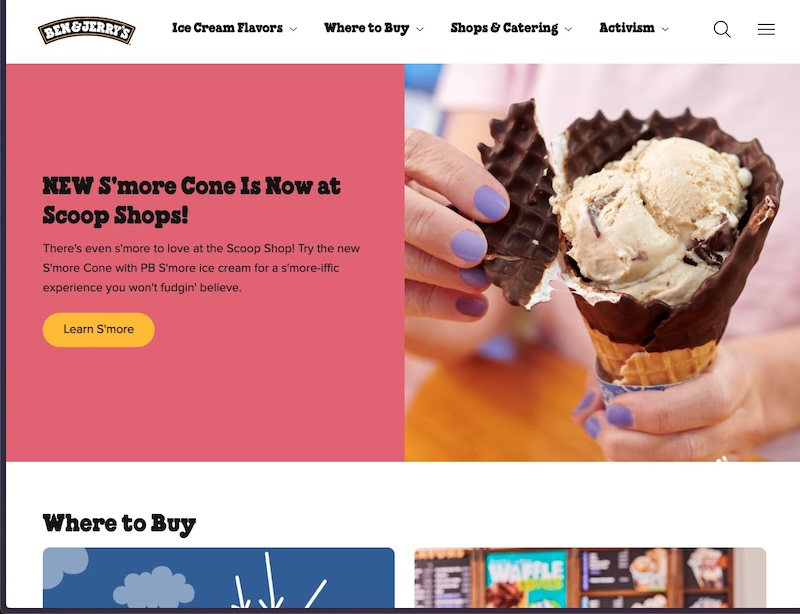
Morality
Understanding and articulating your brand’s moral stance is vital for building a foundation of trust and loyalty with your audience. This aspect of your brand vocabulary is crucial because it communicates your ethical compass and value system to your customers, influencing their decision to engage with your brand.
Importance of a Moral Vocabulary
Your brand’s moral vocabulary helps express core values that resonate deeply with both potential and existing customers. It’s about more than making a sale—it’s about making a statement about what you stand for. This can significantly influence customer behavior, as consumers increasingly prefer brands with strong ethical values that mirror their own.
Examples of Brands with Strong Moral Stances:
- Ben & Jerry’s: Known for its commitment to social justice, Ben & Jerry’s uses terms like “equality,” “justice,” and “activism” in its communications. These words reflect its stance on various social issues and its mission to use the business as a force for good. This vocabulary attracts customers who value these ideals and cements the brand’s reputation as a leader in ethical business practices.
- Everlane: Everlane has built its brand around radical transparency and ethical sourcing. It uses words like “transparent,” “ethical,” and “integrity” to emphasize its commitment to responsible manufacturing and pricing. This moral vocabulary reassures customers that when they shop with Everlane, they engage in an ethical exchange, not just a transactional one.
Crafting Your Moral Vocabulary
To define and implement an effective moral vocabulary, consider the following steps:
- Identify Core Values: Start by outlining the core ethical principles that your brand stands for. This could be integrity, fairness, respect, or accountability. What does your brand fundamentally believe in regarding its conduct in business and society?
- Choose Resonant Words: From your core values, select words that effectively communicate these principles. These words should be powerful and evocative, conveying your moral stance clearly and compellingly. For a brand that values transparency, words like “openness,” “clarity,” and “genuine” might be appropriate.
- Consistency Across Touchpoints: Once you’ve selected your moral vocabulary, use these terms consistently across all brand communications. Whether in marketing materials, social media, or customer service interactions, these words should constantly reinforce your brand’s ethical stance at every opportunity.
- Live Your Values: Finally, ensure that your brand actions align with the words you preach. Customers quickly spot discrepancies between what a brand says and what it does. Living up to your moral vocabulary is essential in maintaining credibility and trust.

Attitude
The attitude of your brand defines how it views and interprets the world—this is a critical component of your brand vocabulary as it sets the tone for your communications and influences how your audience perceives your approach to business and innovation.
Whether your brand adopts an optimistic, realistic, or pioneering stance, your chosen words will project this worldview to your audience.
Understanding Brand Attitude
Brand attitude encompasses your brand’s emotional stance towards developments and challenges in your industry. It reflects how your brand responds to changes and positions itself in the marketplace. This can range from being highly optimistic about future possibilities to maintaining a realistic view of the industry’s challenges or embracing a pioneering spirit that seeks to disrupt and innovate.
Examples of Different Brand Attitudes:
- Optimistic: Coca-Cola, for instance, uses an optimistic brand vocabulary with words like “happiness,” “sharing,” and “joy.” This aligns with their global marketing campaigns, which highlight positive human connections and experiences, reinforcing their vision of a happy, inclusive world.
- Realistic: The financial service company Vanguard adopts a realistic attitude in its communications, using words like “practical,” “reliable,” and “steady.” These terms reflect its commitment to providing straightforward, dependable financial advice, which appeals to its audience’s desire for stability in their investments.
- Pioneering: Tesla, as mentioned earlier, uses pioneering language with words such as “innovative,” “revolutionary,” and “future-forward.” This vocabulary supports its role as a disruptor in the automotive and energy industries, aligning with its mission to drive the world towards sustainable energy.
Crafting Your Brand’s Attitude Vocabulary
To effectively establish and communicate your brand’s attitude, consider the following steps:
- Determine Your Stance: Reflect on how your brand views the world and its future. Are you optimistic about the possibilities, realistic about the present, or driven to innovate and lead change? Your stance will guide the selection of appropriate vocabulary.
- Select Impactful Words: Choose words that accurately convey your chosen attitude. These words should resonate with your target audience and can be consistently used across various platforms to reinforce the desired brand image. For example, a tech startup aiming to highlight its innovative approach might use terms like “cutting-edge,” “trailblazing,” and “game-changing.
- Integrate Across Channels: Consistently use your chosen vocabulary in all brand communications—from marketing materials and social media posts to customer service interactions and corporate communications. This consistency helps solidify your brand’s attitude in the minds of your audience.
- Align Actions with Words: Ensure that your brand’s actions reflect the attitude your vocabulary suggests. If your brand uses pioneering language, it should be reflected in innovative products and forward-thinking business practices.
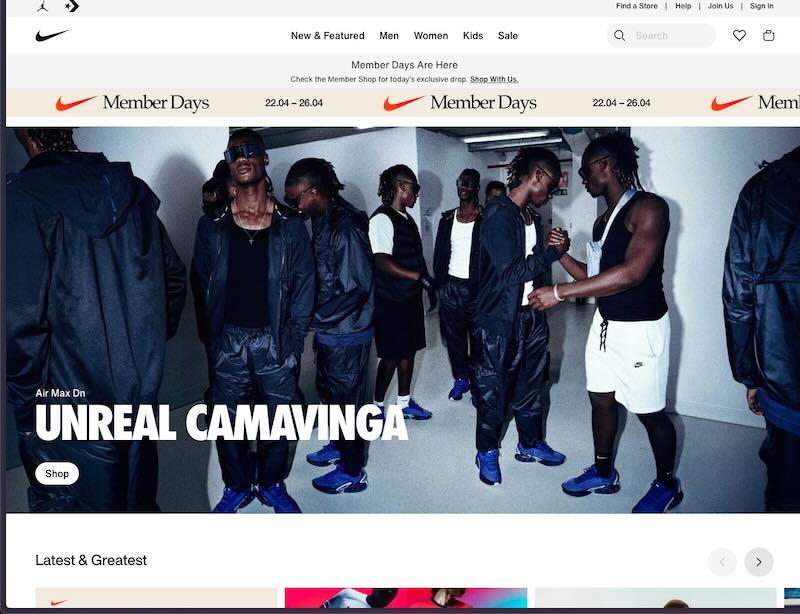
Power
The concept of power within your brand vocabulary is crucial as it defines how your brand perceives and exercises influence and authority. This component is particularly important in positioning your brand as a leader, an innovator, or a supporter in its industry.
The words you choose to describe your brand’s relationship with power communicate your stance on leadership and shape how your audience views your role in driving change.
Understanding Brand Power
Brand power is more than just dominance; it’s about how your brand uses its influence to impact its customers, industry, and the broader community. It involves leadership, empowerment, and the ability to inspire change. By selecting the right words, your brand can articulate its approach to wielding power—whether by leading by example, empowering others, or driving innovation.
Examples of Brands Exercising Power:
- Empowering: Nike is an excellent example of a brand that uses its power to empower. In its messaging, it uses words like “empower,” “inspire,” and “achieve” to motivate individuals to transcend their limits. This vocabulary reinforces Nike’s role in enabling athletes and everyday people to reach their potential.
- Leading: Microsoft utilizes its brand power by focusing on technology leadership. With words like “lead,” “innovate,” and “pioneer,” it positions itself as a frontrunner in the tech industry, guiding the way in innovation and new technologies.
- Inspiring: Apple consistently uses a vocabulary that includes “innovate,” “revolutionize,” and “inspire.” These words describe its products and its mission to lead through inspiration and by setting high standards in design and functionality.
Crafting Your Brand’s Power Vocabulary
To effectively harness and communicate your brand’s relationship with power, consider the following guidelines:
- Identify Your Influence: First, define how your brand interacts with power. Does it empower its customers, lead its industry, or inspire its community? Understanding this will guide your vocabulary choices.
- Choose Empowering Words: Select words that convey your brand’s approach to power. If empowerment is your goal, consider words like “enable,” “uplift,” and “support.” For leadership, words like “guide,” “shape,” and “drive” might be more appropriate.
- Apply Consistently Across Touchpoints: Once you’ve chosen your power vocabulary, apply these terms consistently across all communication channels. This could be in marketing campaigns, PR, internal communications, and customer interactions. Consistency will help reinforce your brand’s stance on power and its role in the industry.
- Align with Actions: Ensure that your brand’s use of power is reflected in its actions if your brand talks about empowerment, it should also be involved in empowering activities, whether through community programs, supportive customer policies, or empowering workplace cultures.
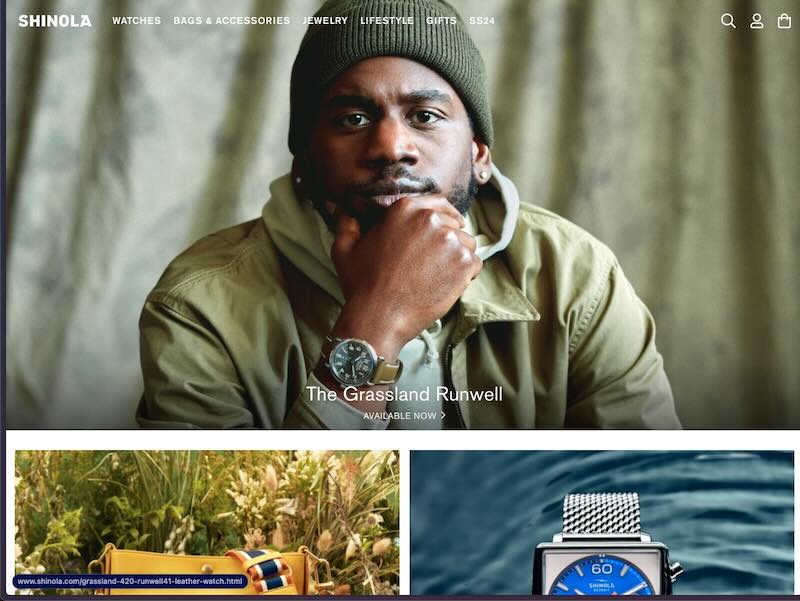
Identity
Defining your brand identity is essential as it determines how your brand perceives itself within the broader market and how it wishes to be perceived by others. This identity can be broad, appealing to a large market segment or niche, targeting a specific group with specialized interests or needs.
The vocabulary you choose to describe your brand identity helps differentiate your brand from competitors and connects with your target audience by highlighting what makes your brand unique.
Understanding Brand Identity
Brand identity revolves around the unique characteristics and values that define a brand. It sets your brand apart in a crowded marketplace and encompasses everything from your visual style and communication tone to your core values and mission. This identity should resonate with your target audience, reflecting who you are as a brand and who your customers aspire to be.
Examples of Brands with Distinct Identities:
- Artisanal: A brand like Shinola represents artisanal identity. It uses vocabulary such as “handcrafted,” “precision,” and “American-made” to emphasize its commitment to quality and local manufacturing. This language highlights the brand’s niche appeal and its dedication to craftsmanship and domestic production.
- Innovative: Google, known for its innovative identity, uses words like “innovative,” “smart,” and “cutting-edge” to describe its services and approach. This vocabulary underlines Google’s role in driving technological advancements and its identity as a leader in the tech industry.
- Luxury: Rolex is synonymous with luxury and exclusivity. It chooses words like “prestige,” “heritage,” and “timeless” to communicate its brand identity. These words reflect the sophistication and enduring value of Rolex watches, aligning with the expectations of its affluent audience.
Crafting Your Brand’s Identity Vocabulary
To effectively establish and communicate your brand’s identity, consider the following steps:
- Define Your Unique Attributes: What makes your brand special? Is it your innovative approach, your commitment to sustainability, or perhaps your rich heritage? Pinpoint these unique qualities that define your brand.
- Select Resonant Words: Choose words that best represent these unique attributes and can consistently convey your brand’s identity across various platforms. For a luxury brand, words like “exclusive,” “elite,” and “sophisticated” might be suitable. For a sustainable brand, consider “eco-friendly,” “sustainable,” and “green.”
- Implement Across Touchpoints: Use this identity vocabulary consistently in all your brand communications, including advertising, product descriptions, social media, and customer service. This consistency helps solidify your brand identity in the minds of your audience.
- Align with Visuals and Actions: Ensure that your identity vocabulary aligns with your visual branding and your company’s actions. If you use words like “innovative,” your products and services should reflect this innovation. Similarly, if your vocabulary emphasizes “handcrafted,” your production processes should align with this claim.

Business
The business aspect of your brand vocabulary focuses on what drives your brand and, crucially, how you conduct your operations. This vocabulary is instrumental in communicating your operational priorities, whether they revolve around efficiency, customer satisfaction, innovation, or sustainability. By articulating these concepts through specific, strategic language, you clarify your business practices and help shape perceptions of your brand in the marketplace.
Understanding Business Vocabulary
Business vocabulary conveys not just what your brand does but how it does it—reflecting the underlying processes, values, and approaches that define your operations. This vocabulary is about transparency and connection, helping customers understand your business model and its benefits.
Examples of Business-Focused Brand Vocabulary:
- Efficiency: Amazon is renowned for its efficiency, a core aspect of its brand identity. It uses terms like “streamlined,” “fast,” and “convenient” to communicate its commitment to efficient service delivery. These words assure customers of a hassle-free experience, emphasizing speed and ease of use.
- Customer-Centric: Zappos, the online shoe and clothing retailer, emphasizes its customer-centric approach. It frequently uses phrases like “customer service,” “customer satisfaction,” and “24/7 support” to highlight its dedication to the customer experience. This vocabulary reinforces the brand’s reputation for outstanding customer service and commitment to meeting customer needs.
- Value-Driven: Walmart uses a vocabulary centered around “value,” “everyday low prices,” and “savings” to communicate its business model. This language targets cost-conscious consumers and reassures them they are making economically wise choices by shopping at Walmart.
Crafting Your Brand’s Business Vocabulary
To effectively develop and employ a business vocabulary that reflects your brand’s operations and values, consider the following steps:
- Identify Key Operational Themes: Determine what key aspects define your business operations. Is it your lean operation, innovative product development, ethical sourcing, or customer-first service approach? Identifying these themes will guide your vocabulary choices.
- Choose Specific, Impactful Words: Select words that communicate these themes. For instance, if sustainability is a key component of your business model, use terms like “sustainable,” “eco-friendly,” and “green.” These should be words that not only describe your operations but also resonate with your target audience.
- Implement Across All Communications: Consistently integrate this vocabulary into all your communications—on your website, in marketing materials, during customer interactions, and within internal communications. Consistency helps reinforce these operational values in your customers’ minds and aligns with their expectations of your brand.
- Align Actions with Words: Make sure that your operational practices reflect the vocabulary you use. If your brand uses the term “innovative” to describe its services, your offerings should be at the forefront of industry trends and technology. Authenticity in how your operations align with your described business model is crucial for building trust and credibility.
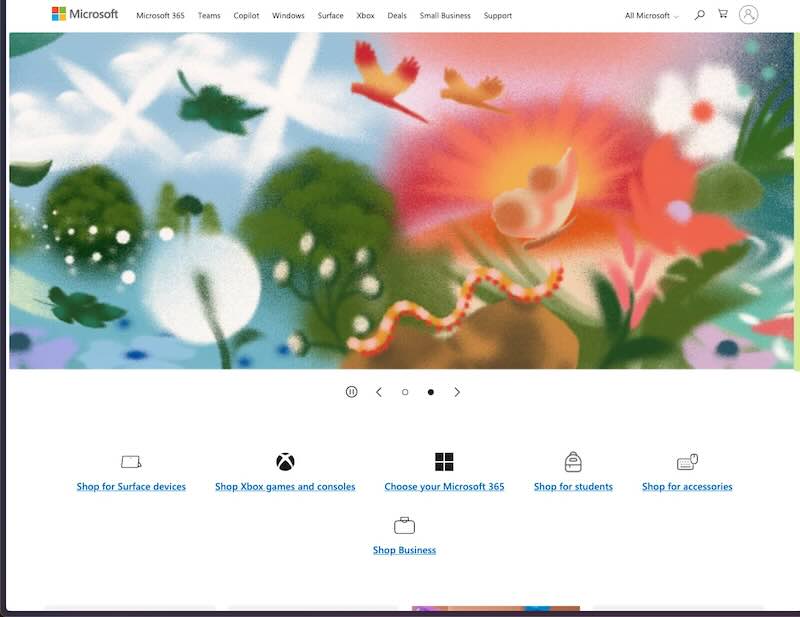
Ideology
Your brand’s ideology encompasses your broader beliefs and principles, particularly regarding social, cultural, and environmental issues. This facet of your brand vocabulary is crucial as it reflects your brand’s stance on significant topics that can resonate deeply with your audience. It reveals what your brand believes in and influences how your customers perceive your brand’s relevance and responsibility in today’s society.
Understanding Brand Ideology
Brand ideology involves your commitments to and beliefs about people, society, and the environment. It’s about how your brand integrates these beliefs into its operations and messaging and how the public communicates and perceives these commitments. This aspect of your brand can greatly influence customer loyalty as consumers increasingly look to align with brands that share their values.
Examples of Brands with Strong Ideological Commitments:
- Social Welfare: Ben & Jerry’s consistently uses an ideological vocabulary that includes “social justice,” “equality,” and “community engagement.” These words underpin its commitment to various social causes and its mission to impact society positively. This enhances its brand identity and aligns it with customers who value social activism.
- Diversity and Inclusion: Microsoft promotes diversity and inclusion within its workforce and through its products. It uses terms like “inclusive,” “diverse,” and “accessible” to describe its efforts and policies. This vocabulary reinforces its commitment to creating a diverse workplace and developing accessible products for all users, resonating with a broad audience.
- Environmental Sustainability: Patagonia’s environmental commitment is central to its brand ideology. It uses terms like “sustainable,” “eco-friendly,” and “protect our home” to emphasize its dedication to environmental causes. This vocabulary aligns with its eco-conscious customer base and highlights its role as an environmental steward.
Crafting Your Brand’s Ideology Vocabulary
To develop an adequate ideological vocabulary for your brand, follow these guidelines:
- Define Your Core Beliefs: Identify the key social, cultural, and environmental beliefs that your brand supports. What are the foundational principles that guide your brand’s actions and decisions? Understanding these will help you craft a vocabulary representing your brand’s ideology.
- Select Resonant Words: Choose words that clearly articulate these beliefs and can consistently convey your brand’s commitments across various platforms. For instance, if your brand is committed to environmental sustainability, consider words like “conservation,” “biodegradable,” and “renewable.”
- Implement Consistently Across Channels: Use this ideological vocabulary consistently in your marketing materials, public relations, social media, and internal communications. This strengthens your brand’s ideological stance and ensures that your audience understands and connects with your brand’s values.
- Align Actions with Ideology: Ensure your brand’s actions reflect the ideology your vocabulary promotes. If your brand speaks about diversity and inclusion, show it through inclusive hiring practices and community engagement. This authenticity strengthens your brand’s credibility and fosters trust among your customers.
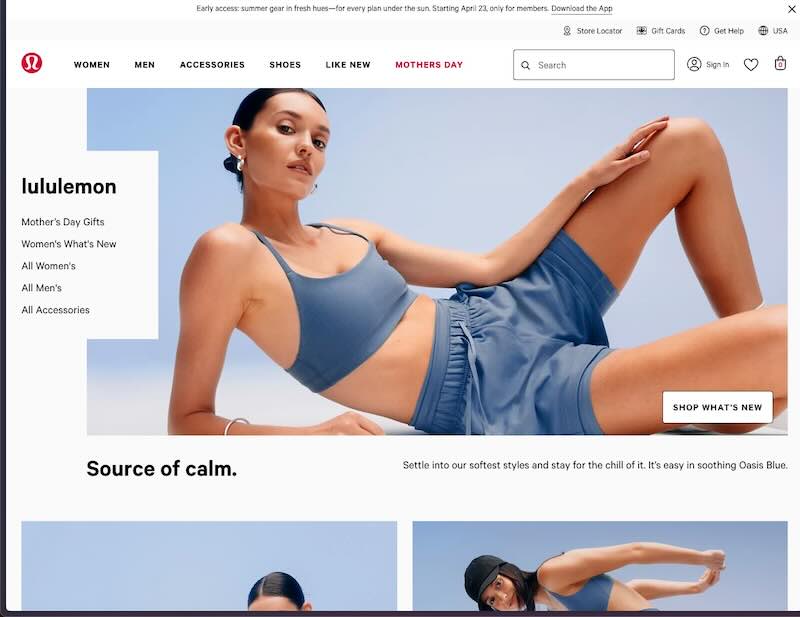
Philosophy
Your brand’s philosophy is the ultimate expression of your values and mission, capturing how your brand views the world and its purpose. This philosophical foundation is crucial as it guides all strategic decisions and communications, shaping how your brand is perceived and interacts with its customers and the broader community.
Understanding Brand Philosophy
A brand’s philosophy goes beyond simple product offerings; it’s about the broader impact your brand aims to have globally. Whether it inspires creativity, promotes wellness, or advocates for sustainability, your philosophy defines your brand’s higher purpose and influences every aspect of your business, from product development to customer interactions.
Examples of Brands with Distinct Philosophies:
- Creativity and Innovation: Adobe stands as a beacon for creativity and innovation. Its vocabulary frequently includes “creativity,” “innovation,” and “imagine.” These words describe its software solutions and its broader mission to enable creativity in others. This philosophy attracts diverse customers, from professional designers to hobbyists, who are drawn to expressing their creativity through Adobe’s tools.
- Wellness and Health: Lululemon promotes a wellness and holistic health philosophy. It uses terms like “well-being,” “mindfulness,” and “balance” to communicate its commitment to not just physical fitness but overall mental and emotional health. This vocabulary resonates with consumers who prioritize a balanced lifestyle, reinforcing Lululemon’s role in supporting their wellness journeys.
- Environmental Responsibility: Patagonia’s philosophy of environmental stewardship is articulated through words like “sustainable,” “protect,” and “conserve.” This highlights its products made from recycled materials and its commitment to environmental causes, appealing to consumers who share these values.
Crafting Your Brand’s Philosophy Vocabulary
To effectively communicate your brand’s philosophy, consider the following steps:
- Identify Your Core Purpose: What is your brand’s broader impact? Define this purpose clearly, as it will inform your choice of vocabulary. Understanding your purpose is key, whether it’s fostering creativity, enhancing wellness, or advocating for social change.
- Select Impactful Words: Choose words that encapsulate your brand’s philosophy and can be used consistently across all forms of communication. These words should be powerful and evocative, conveying the depth of your brand’s commitment to its philosophy.
- Integrate Across All Touchpoints: Consistently use your philosophical vocabulary in your marketing materials, customer service, social media, and internal communications. This consistency ensures that your brand’s philosophy is clearly understood and embraced by all stakeholders.
- Align Philosophy with Practice: Make sure that your business practices reflect the philosophy you advocate. If your brand champions creativity, ensure that your products and services foster creative expression. Authenticity in these actions will strengthen your brand’s credibility and deepen customer engagement.

Implementing Your Brand Vocabulary
Successfully defining your brand vocabulary is just the first step. The real challenge—and opportunity—lies in implementing this vocabulary consistently across all channels and touchpoints of your brand. This consistent application reinforces your brand identity, ensuring a cohesive, unified message that resonates with your audience.
Strategies for Effective Implementation
- Comprehensive Training: Begin with thorough training sessions for all employees, particularly those in customer-facing roles and communications. Ensure that everyone understands the importance of the brand vocabulary and how it should be used in various contexts. This training should cover the nuances of the vocabulary, demonstrating how certain words can influence perception and engagement with the brand.
- Integration in All Communications: Integrate your brand vocabulary into every piece of communication, from marketing materials and advertising campaigns to customer service interactions and internal communications. This includes digital content such as social media posts, email newsletters, and traditional media like brochures and TV commercials. Even the scripts used by customer service representatives should reflect the brand’s vocabulary to ensure a consistent customer experience.
- Content Guidelines and Templates: Develop comprehensive content guidelines and templates incorporating brand vocabulary. These resources should be readily available to everyone creating brand content, ensuring they have the tools to use the vocabulary effectively. Templates can help standardize communications across various platforms, making it easier to maintain consistency.
- Regular Audits and Feedback: Regularly audits your brand’s communications across all channels to ensure the brand vocabulary is used consistently and appropriately. Feedback should be actively sought from both customers and team members to understand how the vocabulary is perceived and its impact on brand image. Use this feedback to make necessary adjustments.
- Reward Consistency: Recognize and reward employees who use brand vocabulary effectively. This could be through formal recognition programs or informal commendations. Rewarding consistency motivates employees and reinforces the importance of adhering to the brand vocabulary.
- Monitor and Evolve: Your brand vocabulary should evolve as markets and audiences evolve. Regularly review and update your vocabulary to ensure it remains relevant and effective. This may involve retiring certain terms that no longer align with your brand’s identity or introducing new vocabulary to reflect changes in your brand’s strategy or market environment.
A well-defined brand vocabulary is far more than a collection of preferred terms; it is a critical strategic asset in building and reinforcing a strong, cohesive brand identity. By carefully selecting each term and consistently implementing this vocabulary across all your communications, your brand can shape how it is perceived by your audience, steer interactions, and influence relationships.
Contact us if you need help creating a robust brand vocabulary as part of your brand strategy and messaging framework.

